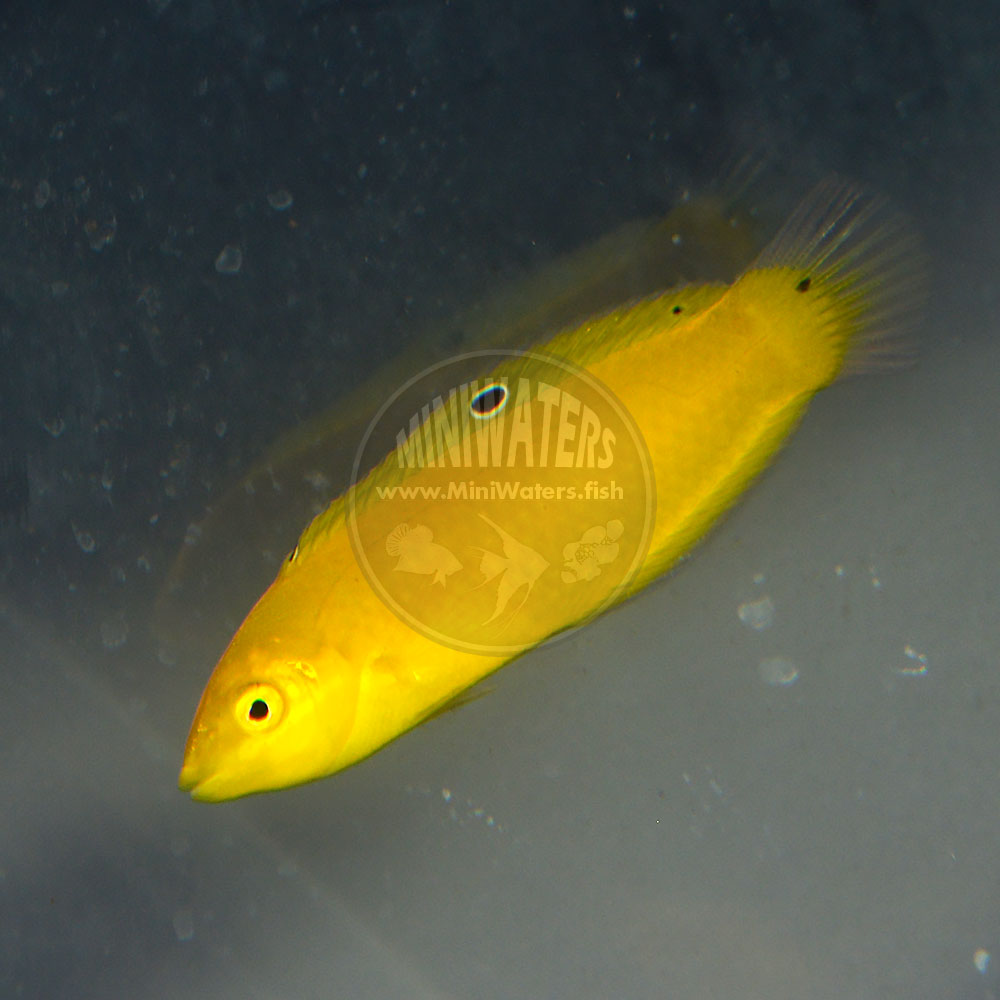
Halichoeres chrysus "Yellow Coris Wrasse" Shop MiniWaters.FISH
Description: The Yellow Coris Wrasse is widespread throughout the tropical and subtropical waters of the central Indo-Pacific, in an area bordered by the Christmas Islands, Indonesia, Japan, New South Wales, the Rowley Shoals, the Tonga Islands, and the Solomon Islands. Their b ody coloration is bright yellow with a few variations according to age. . Juvenile and immature females have two.
Yellow Coris Wrasse
Yellow Coris Wrasse ( Halichoeres Chrysus) are brightly colored golden yellow saltwater fish. They sport a black spot on their dorsal fin and have long bodies with ray-shaped fins. Juveniles can have more than one spot on their fins, but once they reach maturity, the spots go away, and they are left with just one. Are Yellow Coris Wrasse Hardy?

Yellow Coris Wrasse Aquarium Fish Depot
The yellow coris wrasse, also known as the golden rainbowfish or canary wrasse, is a very popular fish due to its vibrant, uniform yellow coloration. This yellow wrasse is relatively hardy and prefers to be in communities with other wrasse. Yellow coris wrasses will happily eat various worms, coral pests, and snails they find around coral reefs.

Yellow Coris Wrasse
The Yellow Coris wrasse is a small, peaceful fish that works well in community aquariums. It's considered to be relatively easy to care for and can be reef safe, as long as aquarists keep an eye on the fish and watch for any nipping. These wrasses are a bright yellow color with darker tails. Young fish will have several dark spots on their.

Yellow Coris Wrasse Manhattan Aquariums
Like other members of the Family Labridae, the yellowtail coris wrasse has an elongate soft body that is tapered and spindle-shaped. The dorsal fin is continuous, and like the other fins, rounded and soft. The pectoral fins are used extensively for swimming with up and down "flying" motions. The pointed snout has a terminal mouth and fleshy.
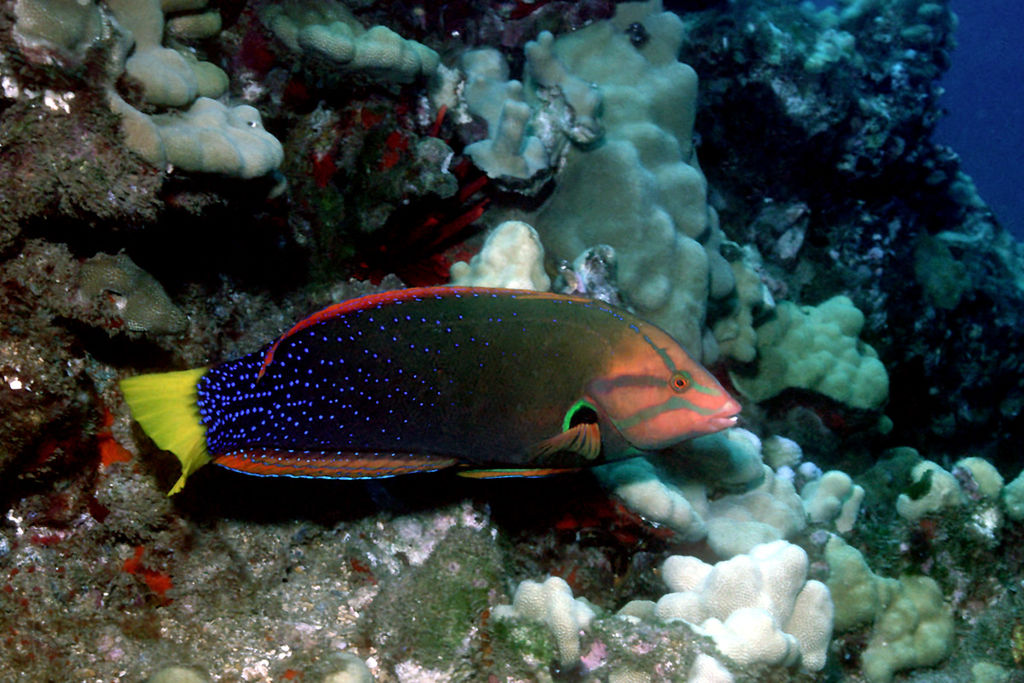
_yellowtail_coris_wrasse_colorful_and_fascinating_fish.jpg Just Gotta
Yellow coris wrasse, also known as canary wrasse or fairy wrasse, is a colorful species that adds a lot of mid-tank activity and a pop of bright color to your tank. Their bright scales become almost reflective under aquarium lights and they are beautiful to observe. Unlike most fish in your aquarium, the yellow wrasse is a functional fish that.

Buy Yellow Coris Wrasse from Delta Aquarium Online Marine Specialist
Quick Facts Common Names: Yellow coris wrasse, Golden rainbowfish, Golden wrasse, Yellow coris, Canary wrasse, Banana wrasse (incorrectly, as that's an entirely different species) Scientific Name: Halichoeres chrysus Size: 5 inches (12.7cm) Minimum Tank Size: 40-50 Gallons (151-189L) Reef Safe? With Caution Care or Experience Level: Easy-Moderate

4 Spot Yellow Coris Wrasse Into the Blue Jameson Saltwater Ecosystems
The Yellow Coris Wrasse is a carnivorous fish and should be fed a meaty diet, consisting of Mysis shrimp and Brine shrimp at least 3-4 times per day. Keeping your Yellow Coris fed will prevent them from picking at any invertebrates you may have in your aquarium, and will also bolster their immune system, giving them a stronger chance at fending.
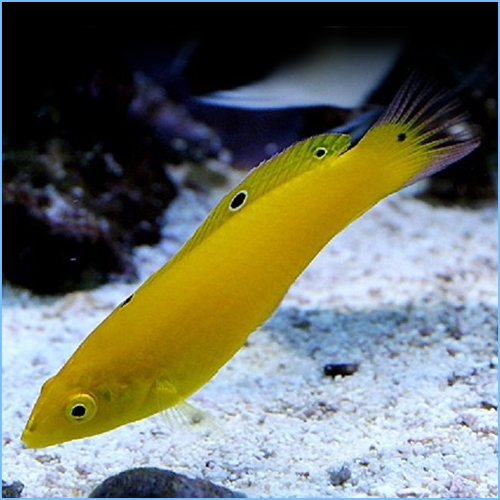
Golden Wrasse or Yellow Coris Wrasse Pete's Aquariums & Fish
The Yellow coris / wrasse should be kept in an aquarium of at least 30 gallon / 120 L. The aquarium should be decorated with a lot of rocks that form caves and other hiding places. The Yellow coris / wrasse likes a lot of light, but there should be shaded areas as well. The aquarium should be well circulated with some calmer areas.
:max_bytes(150000):strip_icc()/GettyImages-149242750-5ae6fcb51f4e1300365ce6af.jpg)
Yellowtail Coris and Red Wrasse Fish Breed Profile
The Yellow Coris Wrasse, also known as Golden Coris Wrasse, is a small, bold sun yellow fish part of the Labridae family. Just as many other wrasses, they go through an initial and terminal phase. During the initial phase, Yellow Coris Wrasse have one or two eyespots on the dorsal fin and a black dot on the caudal peduncle.

Yellow Coris Wrasse (Halichoeres Chrysus) Care Guide Fish Laboratory
The Yellow Wrasse is also referred to as the Golden Rainbowfish, Golden Wrasse, Yellow Coris, or Canary Wrasse. Juvenile's and young females will have multiple black spots on their fins however mature adults will only have 1 spot. A 50 gallon or larger aquarium with a sealed lid, a 2-3 inch sandy bottom to hide under when frightened, and.

Wrasse Yellow Coris 4 a 5 cm (NOVO)
The Black and White (or Yellowstripe) Wrasse ( Coris flavovittata) is uncommon on reefs. Males are rare around the main Hawaiian Islands. Juveniles are black with several white and pink stripes. Females are pink with black and white stripes dorsally.
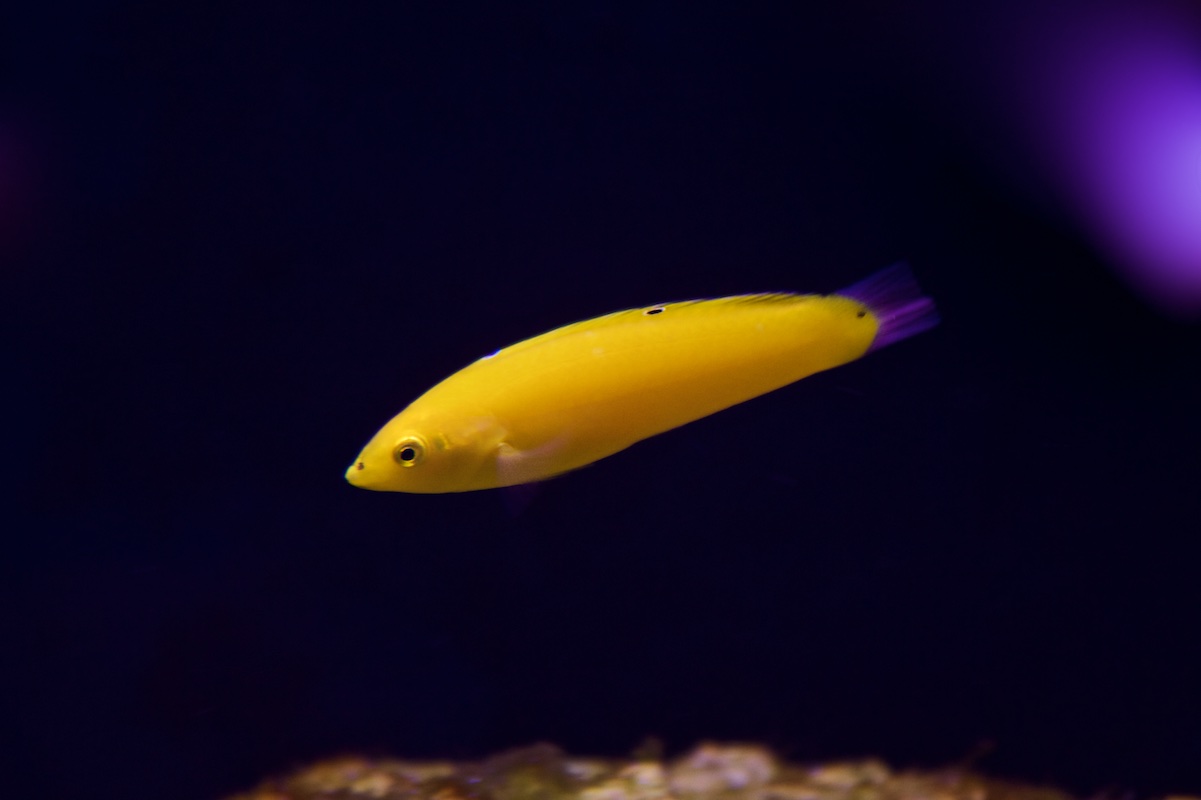
Yellow Coris Wrasses (x2) Idaho Reef
The specific water gravity for a Yellow Coris Wrasse should be maintained between 1.020 to 1.025. Water Flow Rate . For a Yellow Coris Wrasse, you'll need moderate to strong water circulation inside the tank. Install pumps to maintain the flow rate and the current. Compatibility of Yellow Coris Wrasse. Yellow Coris Wrasses are peace-loving.
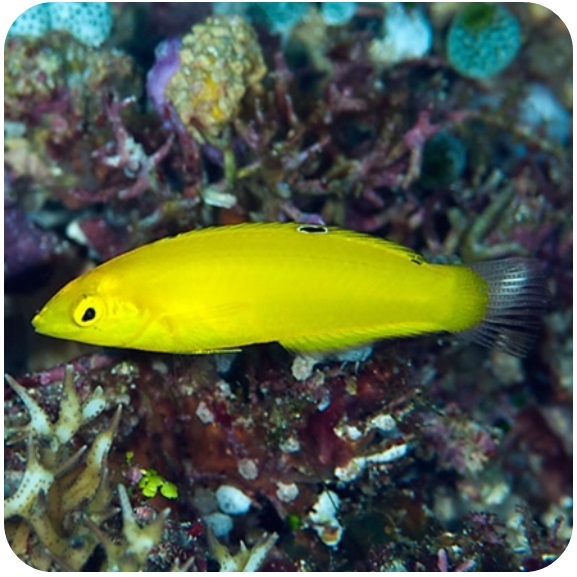
Wrasse Yellow Coris ( Halichoeres chrysus ) Aquaricamp Loja de Aquários
The Yellow Coris Wrasse is known to the aquatic community under various names: golden rainbowfish, golden wrasse, yellow coris, and canary are several names that you will see. Its scientific name is Halichoeres chrysus and it hails from the Pacific Ocean to the edges of the eastern Indian Ocean.

Yellow Coris Wrasse (Halichoeres chrysus) Marine aquarium fish
The Yellow Wrasse, also known as the Golden Rainbowfish, Golden Wrasse, Yellow Coris, or Canary Wrasse is a vibrantly-colored wrasse sure to inject exceptional visual interest and activity to any marine aquarium. The Yellow Wrasse is a popular wrasse among hobbyists of all skill levels thanks to its hardiness and relatively compact size.
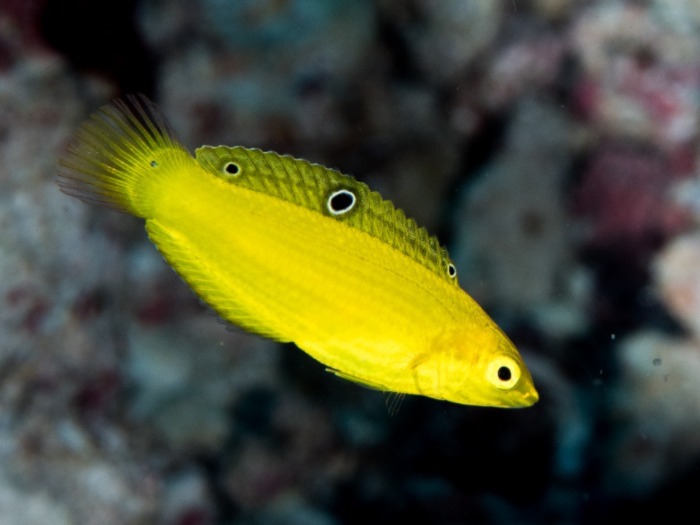
Yellow Coris Wrasse Care, Appearance, Reef Compatibility & More
One of the most beautiful coris wrasse species, Queen coris, is a fish native to the Red Sea, East Africa, and Sri Lanka. They are fascinating and popular in the aquarium trade because their color, behavior, and diet change from juvenile to adult form.